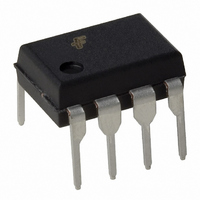FSDM311 Fairchild Semiconductor, FSDM311 Datasheet - Page 9

FSDM311
Manufacturer Part Number
FSDM311
Description
IC SWIT PWM GREEN OVP HV 8DIP
Manufacturer
Fairchild Semiconductor
Datasheet
1.FSDM311L.pdf
(19 pages)
Specifications of FSDM311
Output Isolation
Isolated
Frequency Range
61 ~ 73kHz
Voltage - Input
7 ~ 20 V
Voltage - Output
650V
Power (watts)
13W
Operating Temperature
25°C ~ 150°C
Package / Case
8-DIP (0.300", 7.62mm)
Lead Free Status / RoHS Status
Lead free / RoHS Compliant
Other names
FSDM311_NL
FSDM311_NL
FSDM311_NL
Available stocks
Company
Part Number
Manufacturer
Quantity
Price
Company:
Part Number:
FSDM311
Manufacturer:
FSC
Quantity:
1 200
Company:
Part Number:
FSDM311
Manufacturer:
FAIRCHIL
Quantity:
20 000
Part Number:
FSDM311
Manufacturer:
FAIRCHILD/仙童
Quantity:
20 000
Company:
Part Number:
FSDM311A
Manufacturer:
Fairchild Semiconductor
Quantity:
1 936
Company:
Part Number:
FSDM311L
Manufacturer:
FAIRCHIL
Quantity:
20 000
© 2003 Fairchild Semiconductor Corporation
FSDM311 Rev. 1.1.0 • 7/14/06
3. Leading Edge Blanking (LEB): At the instant the
internal SenseFET is turned on, the primary-side
capacitance and secondary-side rectifier diode reverse
recovery typically cause a high current spike through the
SenseFET. Excessive voltage across the R
leads to incorrect pulse-by-pulse current limit protection.
To avoid this, a leading edge blanking (LEB) circuit
disables pulse-by-pulse current limit protection block for
a fixed time (t
4. Protection Circuit: The FSDM311 has several
protective functions, such as overload protection (OLP),
over-voltage protection (OVP), under-voltage lockout
(UVLO), and thermal shutdown (TSD). Because these
protection circuits are fully integrated in the IC without
external components, the reliability is improved without
increasing cost. Once a fault condition occurs, switching
is terminated and the SenseFET remains off. This
causes V
voltage V
internal high-voltage current source charges the V
capacitor via the V
start voltage V
operation.
alternately enable and disable the switching of the
power SenseFET until the fault condition is eliminated.
4.1 Overload Protection (OLP): Overload is defined as
the load current exceeding a pre-set level due to an
unexpected event. In this situation, the protection circuit
should be activated to protect the SMPS. However,
even when the SMPS is operating normally, the
overload protection (OLP) circuit can be activated during
the load transition. To avoid this undesired operation,
the OLP circuit is designed to be activated after a
specified time to determine whether it is a transient
situation or true overload situation. If the output
consumes more than the maximum power determined
by I
voltage. This reduces the current through the opto-
coupler LED, which also reduces the opto-coupler
transistor current, thus increasing the feedback voltage
(V
blocked and the 5μA current source (I
charge C
FB
LIM
). If V
, the output voltage (V
cc
fb
STOP
FB
to fall. When Vcc reaches the UVLO stop
In
slowly up to Vcc. In this condition, V
LEB
Figure 18. Protection Block
exceeds 3V, the feedback input diode is
START
(7V), the protection is reset and the
) after the SenseFET turns on.
this
str
pin. When Vcc reaches the UVLO
(9V), the device resumes normal
manner,
o
) decreases below its rating
the
auto-restart
DELAY
sense
) starts to
resistor
can
FB
cc
9
increases until it reaches 4.5V, when the switching
operation is terminated, as shown in Figure 19. The
shutdown delay time is the time required to charge C
from 3V to 4.5V with a 5μA current source.
4.2 Thermal Shutdown (TSD): The SenseFET and the
control IC are integrated, making it easier for the control
IC to detect the temperature of the SenseFET. When
the temperature exceeds approximately 145°C, thermal
shutdown is activated.
5. Soft-Start: The FPS has an internal soft-start circuit
that slowly increases the feedback voltage, together with
the SenseFET current, right after it starts up. The typical
soft-start time is 15ms, as shown in Figure 20, where
progressive increment of the SenseFET current is
allowed during the start-up phase. The soft-start circuit
progressively increases current limits to establish proper
working
capacitors, and switching devices. It also helps to
prevent transformer saturation and reduces the stress
on the secondary diode.
t
1 2
=
C
F B
Figure 19. Overload Protection (OLP)
V t
conditions
(
I
2
D E L A Y
Figure 20. Internal Soft-Start
) -
V t
( )
1
;
I
D E L A Y
for
=
5
transformers,
μ
A V t
,
( )
1
=
3 ,
V V t
www.fairchildsemi.com
(
2
inductors,
)
=
4 .5
V
fb












